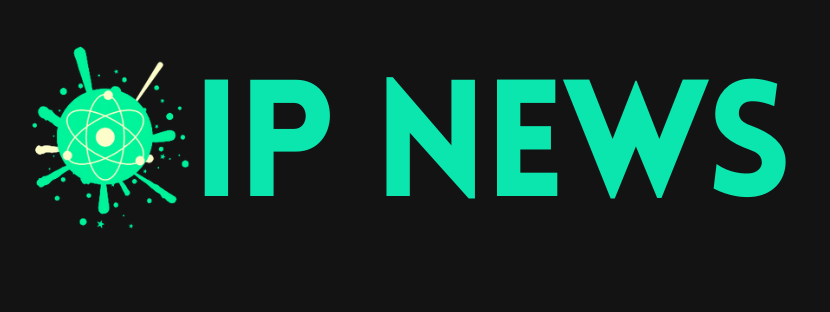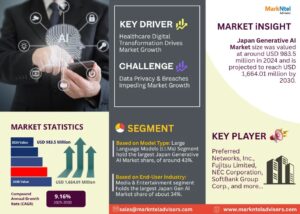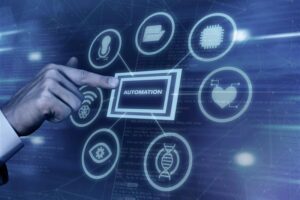Revolutionizing HR with Automation: How AI is Reshaping Talent Management and Development
In today’s rapidly evolving workforce, Human Resources (HR) is undergoing a seismic shift. The traditional processes of recruitment, onboarding, learning,...
In today’s rapidly evolving workforce, Human Resources (HR) is undergoing a seismic shift. The traditional processes of recruitment, onboarding, learning, and development are being reimagined through HR automation and artificial intelligence in HR. What was once manual, time-consuming, and reactive is now becoming data-driven, predictive, and personalized.
From talent matching to career pathway mapping, forward-thinking organizations are embracing digital transformation to gain a competitive edge. This article explores how HR automation is reshaping the way companies attract, develop, and retain talent—placing employees at the center of a more intelligent, personalized, and scalable system.
Why HR Needs Automation Now More Than Ever
Organizations are facing unprecedented challenges: hybrid workforces, a widening skills gap, and the constant need for upskilling. HR departments must not only manage these changes but also deliver value at speed. That’s where HR automation comes in.
Automation eliminates repetitive tasks such as scheduling interviews, filtering resumes, and managing benefits administration. This gives HR professionals the bandwidth to focus on strategic initiatives such as employee engagement, succession planning, and skill development.
But it doesn’t stop at administrative efficiency—automation is now deeply intertwined with AI, unlocking the power to personalize the employee experience.
AI-Driven Learning: Tailored Growth at Scale
One of the most exciting areas of HR automation is ai-driven learning. Unlike static training programs, AI-powered platforms analyze an employee’s role, performance data, skill gaps, and learning preferences to deliver personalized training paths.
For example, an AI system might recognize that a project manager needs better data visualization skills and suggest bite-sized courses on tools like Power BI or Tableau. Over time, the system learns from engagement patterns and outcomes to improve content recommendations.
The result? A more agile and future-ready workforce—built not through guesswork, but through precision learning journeys. Companies that invest in ai-driven learning are seeing improved employee satisfaction, higher retention, and better performance outcomes.
Skill Development in the Age of AI
The shelf-life of technical skills is shrinking. According to the World Economic Forum, over 50% of employees will need reskilling by 2027. Traditional training programs are no longer sufficient—they’re too slow, too generic, and too disconnected from business goals.
HR automation tools powered by AI offer a better alternative. By integrating with performance management systems, learning platforms, and industry trends, these tools create a continuous feedback loop for skill development. Employees are not just trained—they’re transformed.
Even soft skills like leadership, communication, and resilience are being integrated into smart learning ecosystems. AI identifies which competencies are lacking and nudges learners with interactive content, assessments, and coaching sessions.
This move from reactive training to proactive development ensures companies are not just filling gaps—they’re building capabilities for the future.
Interactive Learning Modules: Engaging the Digital Workforce
Engagement is the holy grail of learning and development. Employees are more likely to retain knowledge when training is dynamic, visual, and participatory. Enter interactive learning modules.
These modules go beyond static slide decks or long-winded PDFs. Instead, they offer gamified experiences, real-time feedback, simulations, quizzes, and adaptive difficulty levels. Integrated with AI, these platforms adjust based on user progress, keeping learners in a zone of productive challenge.
Such immersive experiences also make it easier for HR to track engagement and outcomes. Metrics such as time spent, module completion rates, and quiz scores feed back into the system, continuously improving the relevance of future content.
This isn’t just learning—it’s a conversation between employee and machine, creating a two-way loop of education and improvement.
Career Pathway Mapping: From Jobs to Journeys
In the past, career planning was a vague concept, often reliant on annual reviews and manager intuition. Now, AI and automation are enabling career pathway mapping with unprecedented clarity and accuracy.
These systems analyze job roles, market trends, employee performance, and organizational needs to suggest personalized career trajectories. For instance, a junior analyst might be shown potential pathways to data scientist, product manager, or business strategist—along with the skills and certifications needed at each step.
Career mapping platforms allow employees to visualize their growth potential, while HR gains insights into succession planning, internal mobility, and workforce readiness.
By aligning individual aspirations with organizational goals, career pathway mapping becomes a strategic tool for both employee engagement and business continuity.
Designing a Life Plan, Not Just a Career
Modern employees don’t just want jobs—they want meaning, growth, and balance. That’s why forward-thinking HR teams are moving from career planning to life plan development.
AI-powered systems are being used to suggest flexible work options, well-being programs, mentorship opportunities, and financial planning tools based on an employee’s stage in life and personal goals.
For example, an employee returning from parental leave might receive recommendations on hybrid work schedules, upskilling courses during leave, and local child-care benefits.
This holistic approach to employee well-being fosters loyalty and productivity. With automation handling the logistics, HR can focus on designing experiences that truly resonate with people’s lives.
The Power of Artificial Intelligence in HR
The backbone of all these innovations is artificial intelligence in HR. AI doesn’t just automate tasks—it uncovers patterns, predicts behaviors, and recommends actions.
Key applications include:
- Talent matching: AI matches candidates to roles based on skills, culture fit, and past performance data—resulting in faster hires and better retention.
- Predictive analytics: Identify which employees are at risk of leaving and why.
- Chatbots: Answer employee FAQs instantly and consistently.
- Diversity audits: Flag bias in job descriptions and performance reviews.
By embedding AI into every step of the employee journey, HR becomes not just a support function but a driver of strategic impact.
Talent Matching: Finding the Right Fit Faster
The war for talent is real—and it’s not just about hiring the most qualified person, but the right one. AI is transforming talent matching by analyzing large volumes of candidate data to predict success in specific roles.
Instead of relying solely on resumes or interviews, AI systems evaluate skills, personality traits, communication styles, and past outcomes to recommend candidates who are likely to thrive.
This benefits both employer and employee. Employers reduce the cost of bad hires, while candidates land roles that match their strengths and values.
Looking Ahead: Building the Future of Work
HR automation and AI are not just trends—they are foundational shifts that are redefining the way organizations function. In the coming years, we can expect:
- Hyper-personalized learning experiences for every employee.
- Real-time career coaching from AI assistants.
- Fully automated hiring pipelines with bias mitigation.
- Continuous performance reviews driven by sentiment analysis.
Companies that embrace these tools today will be the talent leaders of tomorrow. By investing in ai-driven learning, skill development, and career pathway mapping, businesses are not just managing talent—they’re nurturing it.
Final Thoughts
As technology continues to evolve, so too must the HR function. The integration of artificial intelligence in HR, interactive learning modules, and life plan frameworks reflects a shift toward human-centered automation.
HR automation isn’t about replacing people—it’s about empowering them. When used thoughtfully, these tools free up time, reduce burnout, and create opportunities for meaningful growth.
The future of HR is intelligent, inclusive, and inspiring. And it starts now.
In today’s rapidly evolving workforce, Human Resources (HR) is undergoing a seismic shift. The traditional processes of recruitment, onboarding, learning, and development are being reimagined through HR automation and artificial intelligence in HR. What was once manual, time-consuming, and reactive is now becoming data-driven, predictive, and personalized.
From talent matching to career pathway mapping, forward-thinking organizations are embracing digital transformation to gain a competitive edge. This article explores how HR automation is reshaping the way companies attract, develop, and retain talent—placing employees at the center of a more intelligent, personalized, and scalable system.
Why HR Needs Automation Now More Than Ever
Organizations are facing unprecedented challenges: hybrid workforces, a widening skills gap, and the constant need for upskilling. HR departments must not only manage these changes but also deliver value at speed. That’s where HR automation comes in.
Automation eliminates repetitive tasks such as scheduling interviews, filtering resumes, and managing benefits administration. This gives HR professionals the bandwidth to focus on strategic initiatives such as employee engagement, succession planning, and skill development.
But it doesn’t stop at administrative efficiency—automation is now deeply intertwined with AI, unlocking the power to personalize the employee experience.
AI-Driven Learning: Tailored Growth at Scale
One of the most exciting areas of HR automation is ai-driven learning. Unlike static training programs, AI-powered platforms analyze an employee’s role, performance data, skill gaps, and learning preferences to deliver personalized training paths.
For example, an AI system might recognize that a project manager needs better data visualization skills and suggest bite-sized courses on tools like Power BI or Tableau. Over time, the system learns from engagement patterns and outcomes to improve content recommendations.
The result? A more agile and future-ready workforce—built not through guesswork, but through precision learning journeys. Companies that invest in ai-driven learning are seeing improved employee satisfaction, higher retention, and better performance outcomes.
Skill Development in the Age of AI
The shelf-life of technical skills is shrinking. According to the World Economic Forum, over 50% of employees will need reskilling by 2027. Traditional training programs are no longer sufficient—they’re too slow, too generic, and too disconnected from business goals.
HR automation tools powered by AI offer a better alternative. By integrating with performance management systems, learning platforms, and industry trends, these tools create a continuous feedback loop for skill development. Employees are not just trained—they’re transformed.
Even soft skills like leadership, communication, and resilience are being integrated into smart learning ecosystems. AI identifies which competencies are lacking and nudges learners with interactive content, assessments, and coaching sessions.
This move from reactive training to proactive development ensures companies are not just filling gaps—they’re building capabilities for the future.
Interactive Learning Modules: Engaging the Digital Workforce
Engagement is the holy grail of learning and development. Employees are more likely to retain knowledge when training is dynamic, visual, and participatory. Enter interactive learning modules.
These modules go beyond static slide decks or long-winded PDFs. Instead, they offer gamified experiences, real-time feedback, simulations, quizzes, and adaptive difficulty levels. Integrated with AI, these platforms adjust based on user progress, keeping learners in a zone of productive challenge.
Such immersive experiences also make it easier for HR to track engagement and outcomes. Metrics such as time spent, module completion rates, and quiz scores feed back into the system, continuously improving the relevance of future content.
This isn’t just learning—it’s a conversation between employee and machine, creating a two-way loop of education and improvement.
Career Pathway Mapping: From Jobs to Journeys
In the past, career planning was a vague concept, often reliant on annual reviews and manager intuition. Now, AI and automation are enabling career pathway mapping with unprecedented clarity and accuracy.
These systems analyze job roles, market trends, employee performance, and organizational needs to suggest personalized career trajectories. For instance, a junior analyst might be shown potential pathways to data scientist, product manager, or business strategist—along with the skills and certifications needed at each step.
Career mapping platforms allow employees to visualize their growth potential, while HR gains insights into succession planning, internal mobility, and workforce readiness.
By aligning individual aspirations with organizational goals, career pathway mapping becomes a strategic tool for both employee engagement and business continuity.
Designing a Life Plan, Not Just a Career
Modern employees don’t just want jobs—they want meaning, growth, and balance. That’s why forward-thinking HR teams are moving from career planning to life plan development.
AI-powered systems are being used to suggest flexible work options, well-being programs, mentorship opportunities, and financial planning tools based on an employee’s stage in life and personal goals.
For example, an employee returning from parental leave might receive recommendations on hybrid work schedules, upskilling courses during leave, and local child-care benefits.
This holistic approach to employee well-being fosters loyalty and productivity. With automation handling the logistics, HR can focus on designing experiences that truly resonate with people’s lives.
The Power of Artificial Intelligence in HR
The backbone of all these innovations is artificial intelligence in HR. AI doesn’t just automate tasks—it uncovers patterns, predicts behaviors, and recommends actions.
Key applications include:
- Talent matching: AI matches candidates to roles based on skills, culture fit, and past performance data—resulting in faster hires and better retention.
- Predictive analytics: Identify which employees are at risk of leaving and why.
- Chatbots: Answer employee FAQs instantly and consistently.
- Diversity audits: Flag bias in job descriptions and performance reviews.
By embedding AI into every step of the employee journey, HR becomes not just a support function but a driver of strategic impact.
Talent Matching: Finding the Right Fit Faster
The war for talent is real—and it’s not just about hiring the most qualified person, but the right one. AI is transforming talent matching by analyzing large volumes of candidate data to predict success in specific roles.
Instead of relying solely on resumes or interviews, AI systems evaluate skills, personality traits, communication styles, and past outcomes to recommend candidates who are likely to thrive.
This benefits both employer and employee. Employers reduce the cost of bad hires, while candidates land roles that match their strengths and values.
Looking Ahead: Building the Future of Work
HR automation and AI are not just trends—they are foundational shifts that are redefining the way organizations function. In the coming years, we can expect:
- Hyper-personalized learning experiences for every employee.
- Real-time career coaching from AI assistants.
- Fully automated hiring pipelines with bias mitigation.
- Continuous performance reviews driven by sentiment analysis.
Companies that embrace these tools today will be the talent leaders of tomorrow. By investing in ai-driven learning, skill development, and career pathway mapping, businesses are not just managing talent—they’re nurturing it.
Final Thoughts
As technology continues to evolve, so too must the HR function. The integration of artificial intelligence in HR, interactive learning modules, and life plan frameworks reflects a shift toward human-centered automation.
HR automation isn’t about replacing people—it’s about empowering them. When used thoughtfully, these tools free up time, reduce burnout, and create opportunities for meaningful growth.
The future of HR is intelligent, inclusive, and inspiring. And it starts now.
The Rise of Artificial Intelligence in HR
Artificial intelligence in HR refers to the use of AI technologies—such as machine learning, natural language processing, and predictive analytics—to automate and improve HR functions. This includes talent acquisition, employee engagement, performance management, and training.
By analyzing large volumes of data, AI systems can identify patterns that help recruiters find ideal candidates faster. For example, AI-driven platforms can screen resumes, conduct preliminary assessments, and even analyze facial expressions and speech patterns during interviews to provide an unbiased evaluation of candidates. This not only improves efficiency but also reduces human bias—resulting in more diverse and inclusive workplaces.
Smarter Talent Matching and Recruitment
One of the most transformative impacts of HR automation lies in talent matching. Traditional recruitment processes often rely heavily on manual keyword matching and recruiter intuition, which can be both time-consuming and inaccurate. In contrast, AI-powered platforms use deep learning algorithms to match candidate profiles with job descriptions, taking into account experience, skills, cultural fit, and growth potential.
This kind of ai-driven learning allows systems to continually refine their recommendations based on outcomes—like which hires stay longer or perform better. By applying these insights, HR teams can dramatically improve hiring quality and reduce turnover.
Interactive Learning Modules for Continuous Upskilling
Once talent is onboarded, keeping them engaged and continually upskilled is a top priority. HR automation makes it possible to deploy interactive learning modules that adapt to individual learning styles, track progress, and offer real-time feedback.
Unlike static training programs, AI-powered learning platforms use data analytics to deliver personalized learning paths. For example, an employee weak in communication skills but strong in technical expertise may receive customized training modules that help them improve in the areas they need most. This data-informed approach keeps training relevant, boosts engagement, and accelerates professional growth.
Moreover, the integration of gamification, real-time quizzes, and microlearning content makes these modules more engaging. Employees learn better when the content is relevant and accessible—especially when it fits into their day-to-day workflow.
Skill Development through AI-Driven Learning
The modern workplace requires employees to constantly evolve their skill sets. Whether it’s adapting to new technologies, management practices, or business models, skill development is essential. With ai-driven learning, HR departments can implement dynamic training initiatives that are far superior to one-size-fits-all programs.
These systems analyze current skills, predict future skill demands, and recommend personalized development plans. AI can even benchmark an employee’s skill level against industry standards or top performers within the company, helping both the employee and employer understand what areas need focus.
For example, a marketing professional might receive a custom plan to enhance data analytics, while a project manager could be guided toward agile certifications—all based on current trends and role requirements. This kind of precision is nearly impossible without automation.
Mapping Career Pathways with Precision
One of the most strategic applications of HR automation is career pathway mapping. Employees today value clarity around their growth potential and want to know how they can advance within an organization. AI makes it possible to visualize career paths by analyzing historical data, skill progressions, and promotion timelines across similar roles.
Imagine an employee starting as a junior software engineer. Through AI tools, HR can outline a roadmap that shows how similar individuals advanced to lead engineer, then team manager, and eventually CTO—highlighting the skills, achievements, and milestones required at each stage. This creates transparency and motivation for employees while enabling HR to plan succession and development programs more effectively.
Such career pathway insights also help identify potential leadership candidates early, enabling targeted mentoring and investment in high-potential individuals.
The Life Plan: Aligning Employee Goals with Business Strategy
The integration of life plan strategies into HR automation adds a human touch to technology-driven processes. A life plan considers an employee’s personal aspirations, lifestyle choices, and long-term goals alongside their career objectives. When HR can align business needs with individual life plans, the result is a more engaged, loyal, and productive workforce.
For instance, if an employee expresses a desire to relocate, AI systems can suggest internal opportunities at other locations. If someone wants to transition into a different department, their learning modules and development plan can be adapted accordingly.
By combining life plans with career data, HR creates a personalized experience that shows employees they are more than just a number—they’re a valued part of the organization’s future.
The Benefits of HR Automation for Businesses
Adopting HR automation offers multiple benefits for organizations, including:
- Reduced time-to-hire: Automated resume screening and interview scheduling speed up recruitment.
- Better hiring decisions: Data-driven insights reduce bias and improve match quality.
- Increased employee engagement: Personalized learning and development keep employees motivated.
- Lower turnover: Career mapping and life planning foster loyalty and satisfaction.
- Scalable operations: Automation enables HR teams to manage larger workforces with fewer resources.
Companies that embrace AI-powered HR solutions position themselves as modern employers of choice—capable of attracting and retaining top-tier talent in a competitive market.
Challenges and Ethical Considerations
Despite its advantages, HR automation comes with challenges. Privacy concerns, data security, algorithmic bias, and over-reliance on technology are legitimate issues that require careful planning. Businesses must ensure that AI tools are transparent, explainable, and used ethically—especially when making decisions that affect people’s careers.
Furthermore, the human element of HR should never be completely replaced. Empathy, emotional intelligence, and cultural nuance still play a critical role in people management. The best approach is a hybrid one—where automation handles repetitive tasks, and humans focus on high-value interactions.
Final Thoughts
HR automation, especially when infused with artificial intelligence in HR, is no longer just a trend—it’s the new standard. From talent matching and interactive learning modules to skill development, career pathway mapping, and life plan alignment, AI is reshaping the future of work.
Organizations that invest in ai-driven learning and automation tools today are setting themselves up for success tomorrow. By empowering employees with personalized growth opportunities and giving HR teams actionable insights, businesses can foster a resilient, agile, and future-ready workforce.







